Lawn Care for Beginners
Every new home owner and novice gardener at sometime has to learn the basic lawn care for beginners step-by-step guidelines.
Lawn envy is what occurs when you see all of those beautiful lawns and know that yours isn’t one of them.
Developing and growing a healthy lawn does take work, but more than work, it takes the knowledge to know how to avoid or treat lawn care problems, cultivate healthy grass and plants and feed and maintain the lawn.
Regardless of whether you have a green thumb or struggle to keep any plant alive, you can learn how to have a great looking lawn that will make others look at your property and turn green with envy.
Setting Your Lawn Up For Success
Much like an architect uses a blueprint to build a beautiful home, you need a blueprint to build a beautiful lawn.
Everything begins in the planning stage.
For this, you want to figure out what spaces you have to work with.
You can sketch your lawn out by hand or you can use one of those interactive gardening software tools that will help you get your lawn set up.
Once you have the layout of your lawn, you want to identify any trouble spots.
This would be something like poor soil aeration or too much water retention.
Identifying trouble spots can help you fix them so that you lay groundwork for a successful lawn.
Before you can have a lawn that looks great, you want to make sure that you end up with a lawn that you don’t have to work on continually.
One of the best ways to get a lawn that looks good without a lot of effort is to make sure that you have the right kind of grass for your area.
Certain grass types are better for certain areas of the United States than other grasses are.
Grass can be warm or cool season grass.
The way that you can tell which is which is determined by how well the grass grows during the warm or cool months of the year.
If you notice that your grass is thicker and taller in the fall, then you probably have cool season grass.
Some types of cool season grass are Kentucky bluegrass, perennial ryegrass and grass from the fescue family.
If you live in a warm climate, then you want warm season grass. Get something like Bermuda grass.
This type of grass is easy to grow, tough to destroy and can survive - even in soil that’s out of balance.
Like many grasses, Bermuda grass will die out when the weather turns colder.
What some people choose to do with their lawns is to use a mixture of different grass types to get a full, healthy appearing lawn.
The climate that you live in will have a big impact on how well your grass grows, so you want to make sure that you choose the grass that’s right for your climate.
If you’re close to the coast, then you would choose a warm season grass.
As you travel up toward the northern states, you’ll find that some states can handle either warm or cool season grasses.
But the further north that you live, it’s better to choose cool season grasses.
Preparing Your Lawn for the Grass

The better prepared your soil is, the better it is for your grass.
Acidic soil can make it tougher for any plant to grow.
You can test your soil’s pH level.
The closer the soil is to neutral, the better it is for your plants’ survival.
Putting in new grass into a lawn that’s ready for it can give new life to a patchy lawn.
Growing a luxurious lawn means creating an environment that’s welcoming to grass - even if you use different types like sod, seed or plugs.
The best time of year to get started renovating your lawn is when the summer season starts to head into fall.
It’s a better time of year for the grass.
But before you put anything in, you’ll want to get rid of the weeds first.
It’s easier to do that beforehand so that you don’t risk damaging the grass.
If you weed by hand, make sure that you get the root of the weed.
If you choose to use a weed killer, you’ll want to use an organic one.
When you’re preparing your area, you need to make sure that there aren’t any areas where water can pool.
If your lawn is slanted, you might notice that water tends to puddle in some areas of the lawn.
That standing water is actually damaging your lawn. Grass can tolerate standing water only so long before it dies.
You might start to notice patchy areas or portions of grass that looks like straw. This is what water damage will do.
You need to plan how you’ll water your grass. You’ll have to know the moisture requirements for the type of grass you have or the type you plan to put in.
Some people water their lawn on a regular schedule, but what’s best for the grass is that you water it when it needs it - and that schedule might vary depending on the temperature and the condition of the soil.
Watering the lawn will also depend on whether your lawn is in the shade or in the sun - or if it's a mixture of both.
It’ll also depend on the kind of grass that you have or plan to put in.
For example, Kentucky bluegrass needs a lot more water than other grasses do.
To help with irrigation, people with established lawns and those putting in new lawns will sometimes put in irrigation systems.
If you decide to do that, you want to make sure that your lawn is level first.
Once you have your area prepared, it’s time to take care of the grass.
Putting in the Grass
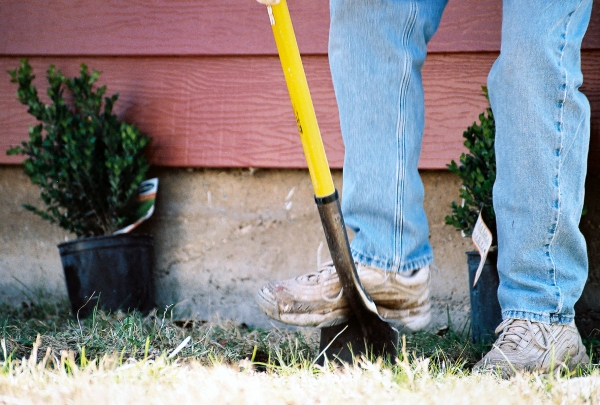
You have a few different choices to make if you’re going to plant grass.
You can choose to plant plugs, use seed or put down sod.
You can also go with stolons or sprigs, too.
Stolons are a creeping grass and many people like to use this one.
You can tell if grass is a creeping grass if you pull some up and it looks like the grass is all tied together in a long row.
You buy creeping grass by the bushel. Not all varieties of grasses are available in all formats.
Since you need to choose a grass based on your climate, let’s divide the grass up according to whether they’re cool or warm season grasses.
Under cool season grasses, you have the popular Kentucky bluegrass, grass in the fescue family, bent grass and ryegrass.
If you’ve ever admired the lush lawn of a golf course and want your lawn to look similar, you’d choose a bent grass.
But keep in mind that these grasses are very high maintenance grasses.
Bent grass varieties that are popular are velvet, colonial and creeping.
Kentucky bluegrass is a cool season grass that likes a lot of water.
It’s tough enough so that it’s often used in athletic fields. You can choose from low or high maintenance varieties.
The fescue family of grass is turfgrass with a wide range of advantages and disadvantages.
It’s tough enough to handle cold weather, higher elevations, little sunshine and soil that’s not good for growth.
Though this grass is a survivor, it does break easily from foot traffic and is prone to develop yellow or dead grass spots.
So if you’re going to have kids running around on your lawn, don’t choose a grass from the fescue family.
In this family of grasses, the types you can choose from are creeping, slender creeping, hard, chewings, and sheep fescue.
You might see the creeping ones referred to as ‘red’ fescues.
Ryegrass falls into the categories of annual or perennial and there are hundreds of varieties to choose from.
These grasses are often used with a mixture of other grasses because of their durability.
If you have a lawn that’s going to see a lot of foot action, this is the type of grass you’d want to choose.
Some warm season grasses are Grama, Buffalo, Centipede, St. Augustine, Zoysia, Carpet, Bahia and Bermuda.
If you’re looking for grass that will nice long into the cooler seasons, Bahia grass is what you’re looking for.
Bahia grass has deep roots and is good for use in soil that leans toward a sandier texture.
It’s low maintenance, durable and doesn’t use a lot of water.
It’s not good in shady areas or for use in lawns where there will be a lot of foot traffic.
Grama grass and buffalo grass are two popular grasses because of how durable they are - but these are among some of the most expensive grasses you can plant.
Bermuda grasses grow well in all sorts of soil conditions and can handle dry or moist warm season climates.
The disadvantage is that this type of grass is more prone to growing over its boundaries.
If not maintained regularly, it will encroach quickly over sidewalks and driveways.
Zoysia, and St. Augustine grasses have deep roots and both are fairly easy to maintain.
Centipede grass is a slow growing grass and does not tolerate wear very well.
To use seed on lawns, for every 1,000 square feet of lawn, you’ll need about 6 pounds of seed and it will take about a week for the seed to germinate.
Make sure that you spread the seed evenly.
Use a spreader horizontally across your lawn and then vertically to make sure the lawn is completely covered.
Next, apply a covering of peat moss over the seed bed. Use a grass roller over the area. You can do this by using a hand roller that you walk behind or you can use a roller that attaches to a tractor.
Water the seeded area and then put up a protective boundary to keep people from walking on the seeded lawn.
Using plugs takes longer, but many people prefer this over seeding.
For the same 1,000 square feet of yard, you’ll have to get between 8-9 bushels of plugs.
If you use plugs, you dig a hole, put the plug in, reset the soil and water the soil.
Sod looks like square pieces of grass carpet or rolls of grass carpet depending on what form you buy it in.
People choose to use sod because of how fast it is to get a new lawn.
Before the sod goes down, till, grade and make sure the soil is moist.
Then lay the sod as if you were laying carpet. Don’t leave spaces between the pieces as you put them down.
Make sure that you don’t have ending edges even with the next piece.
Roll the sod, then water and you’re done.
The Truth Behind Watering Your Lawn
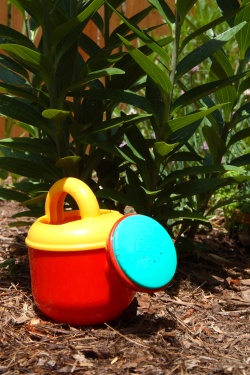
Most people water their lawn too much. Lawns should not be watered on schedule.
Instead, a lawn should only be watered if the grass actually needs the moisture.
Grass that’s watered too often loses oxygen.
You can tell if the grass needs water by looking at the blades of grass.
If they appear wilted, then it’s time to water.
You’ll also want to pay attention to the extreme temperatures.
When it’s really hot outside, your grass needs to be watered to keep the extreme temperatures from causing the heat to burn it.
You can let nature do some of the work by letting the dew water the grass, but the rule of thumb that you want to go by is to water the grass at least once a week - only if it hasn’t received at least an inch of water.
If the water pools or absorbs slowly, then it’s being watered too often.
Fertilizing for a Lush, Green Lawn
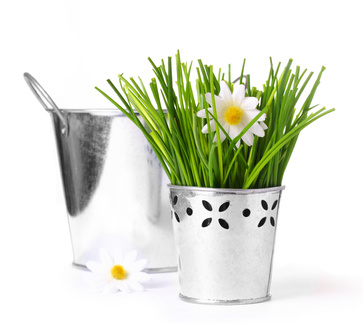
Fertilizing your lawn is the way that you feed it.
Feeding your lawn helps it stay healthy and gives it the strength it needs to fight whatever would attempt to destroy it.
You want to fertilize the lawn every three months.
Start in the spring, feed it again right before summer hits, again in the summer months and finally, fertilize it again in the fall.
By fertilizing in the fall, you give your grass nutrients and help it make it through the winter.
The fertilizer that you buy will have instructions as well as numbers on the bag.
The numbers let you know how much percentage of nutrients are in the bag.
You want to watch the nitrogen count. Too much nitrogen is bad for grass and will kill it.
When you’re ready to fertilize, use a spreader and go across your lawn in a criss-cross direction.
First, cover the lawn vertically and then go over it horizontally.
The bag will let you know if you’re supposed to water the lawn before you fertilize or after you’ve put the granules down.
Essential Lawn Care
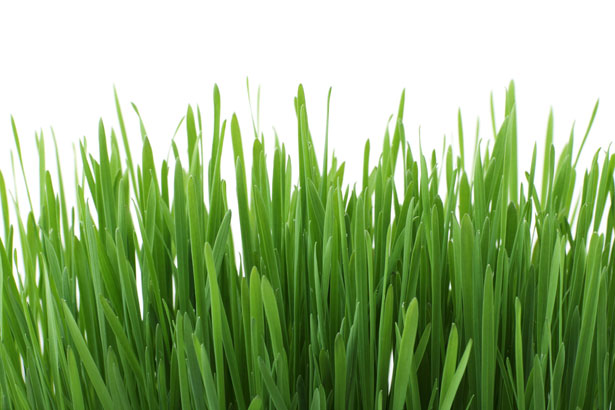
Besides watering and fertilizing, essential lawn care also consists of mowing and weeding your lawn.
There is an art to mowing the grass.
The best way to get a great looking lawn when you mow is knowing the length your grass needs to be in order to stay healthy.
Letting your grass stay longer is actually healthier for the lawn.
Mowing can damage your grass if you’re not careful. If you mow some grasses too short, you end up with burned patches on your lawn.
Don’t ever cut the blades of your grass in half. You only want to cut off the top third of the blade.
Weeds can spring up anywhere and they’re pretty determined to survive.
You can get your soil balance right to help discourage weed growth. You can also pull weeds by hand.
That’s a pretty easy job to do unless you have a very large lawn - and then you might find it too taxing to do by hand.
If that’s the case, you can use a weed extractor.
This is a tool that you can push down into the soil that will clamp the root of the weed and lift it up and out of the ground.
Weed killers or herbicides are also good for controlling weeds.
You can find some weed killers that will prevent the weed from reaching maturity by stopping it before it grows.
For weeds that are already present in your lawn, you can use herbicides designed to kill existing weeds.
Important!
Regardless of whether you have a green thumb or struggle to keep any plant alive, with a bit of study of lawn care for beginners you can learn how to have a great looking lawn that will make others look at your property and turn green with envy.
Continue to Research

Growing a lawn that’s healthy and vibrant isn’t something that happens overnight.
In many cases, it’s not even something that happens in one growing season.
But little by little, you’ll start to see significant improvements in your lawn until the day you open the front door and realized it can be classified as “lush!"
Invest in good quality lawn seeds, tools and fertilizers. Read the guides available to teach you about the best lawns for your region. Learn what you need about lawn care for beginners to be able to create your own beautiful lawn.
Start with a formidable action plan and then map out a calendar that helps you stay on top of the maintenance steps you’ll need to adhere to.
Buy the best products that you can afford and make sure that you’re not putting anything on your lawn that harms your environment.
More Resources
Here are some lawn care for beginners products you can buy online that I think look very useful:
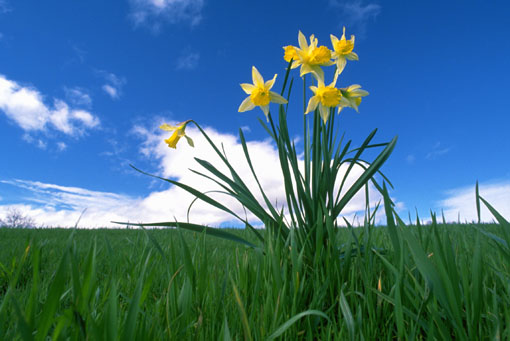
Below here I'm featuring more pages with helpful how-to-do-it tips on this subject of lawn care for beginners.
Feel free to submit your own story or article about it, and I will create your own page here with your contribution for the community to read.
Latest Tips for How To Do It Yourself: Gardening
Do you have a tip you want to contribute here? Share it!
Read the latest updates & how-to tips here:
Click below to see the latest how to do it tips and contributions to this page...
St Augustine Grass: Water, Fertilizer, Pests and Mowing
St Augustine grass is a warm season grass. It is a dark blue/green grass that is coarse. It has hard flat stems and flat broad leaves. This grass grows …
Buffalo Grass: From Montana to Mexico
Buffalo grass is a grass that is native to the Great Plains from Montana down through Mexico. However, buffalo grass will rarely grow in sandy soils or …
Kentucky Blue Grass: Most Popular of All Grasses
Kentucky blue grass is a cool season grass. Despite its name, the plant is not a Kentucky native. The English settlers brought Kentucky blue grass to North …
Ornamental Grass Adds Personality to Lawns and Gardens
Many gardeners want something that is going to last in their gardens throughout the entire year and that is why many of them are choosing to plant Ornamental …
Soil: The Foundation Of Your Lawn Grasses
Before you lay sod or sow any lawn grasses, you should test the soil to determine its pH. The pH scale will range from zero to 14. A neutral soil has a …
Black & Decker NST2118 12-Inch 18-Volt Ni-Cd Cordless Electric GrassHog String Trimmer Edger
There’s no compromise with this Black & Decker NST 2118 cordless trimmer/edger. It delivers everything you would expect with a Black & Decker tool – and …
Toro 51486 Cordless 12-Inch 24-Volt Lithium-Ion Electric Trimmer Edger
This cordless Toro 51486 isn’t the cheapest trimmer/edger on the block, but if you need a power horse, loaded with features that make your landscaping …
Black & Decker ST1000 9-Inch 1.8 amp Electric Grass Trimmer
The low price and light weight of this Black & Decker ST1000 electric grass trimmer make it an excellent choice for trimming smaller lawns, flower beds, …
Review of The Precision Products Plug Aerator
If you take pride in having a spectacular green lawn all year round, and expect it to be flawless, you already know that you have to put the work into …
Honda FG110 Aerator Kit
Grass, plants and flowers all need oxygen and nutrients to survive, but sadly, not all lawns get what they need.
As a result, many lawns end up with …
Agri-Fab 45-0299 48-Inch Tow Plug Aerator
A professional lawn care company charges a lot to aerate your lawn and you don’t want to spend that kind of money.
You know your ground has to be opened …
Yard Butler D-6C Manual Lawn Coring Aerator
To get a great looking lawn, you have to prepare the soil beforehand. To keep a great looking lawn, you have to perform regular maintenance.
The easiest …
Step 'N Tilt Lawn Core Aerator 2
Using a regular manual aerator can cause some stress on your knee joints. The repetitive movements can make your back ache - even if you have a small area …

"Power Tips" magazine is back!
You Get A Free Complete Self Help Report delivered to your email box every edition, plus you get a free PLR article and other great gifts!
SUBSCRIBE BELOW ... I promise you will want to USE what you learn!
I really want to know what you think of this site, this page, and to hear your tips or suggestions about it.
So please share your story or simply add a Comment in the comment box.
If you feel that the information on this page has been useful to you please give it a Like or share it with your friends - thanks!!
"You are a life Saver!!
I recently discovered this site and I can tell you that my life has not been the same. I now come here EVERYDAY and spend at least 1 hour.
I used to spend that time browsing online fashion and beauty
magazine which just means that I spend more. Now I have replaced that
habit with coming here.
In future I will think about contributing articles as well. Thank you! Thank you!! Thank you!!! and God bless"
Contact Us | About Us | Terms of Use | Privacy Policy | FAQ | Testimonials
Amazon and the Amazon logo are trademarks of Amazon.com, Inc. or its affiliates. As an Amazon Associate I earn from qualifying purchases. Product prices and availability are accurate as of the date/time
indicated and are subject to change. Any price and availability
information displayed on [relevant Amazon Site(s), as applicable] at the
time of purchase will apply to the purchase of this product.
Back to HOME PAGE of this lawn care for beginners section of the site.
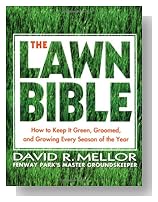







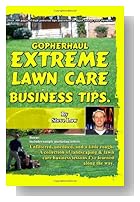
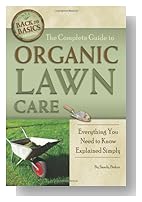
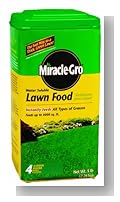
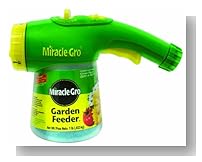
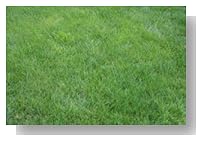
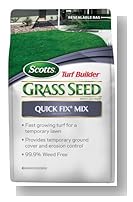
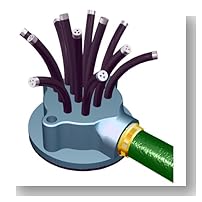

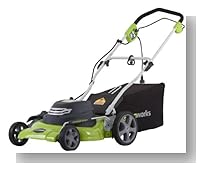


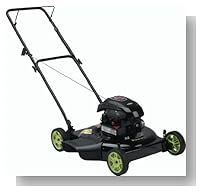


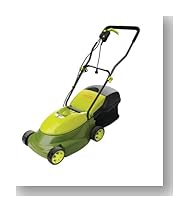
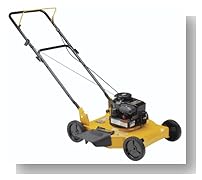









New! Comments
Have your say about what you just read! Leave me a comment in the box below.